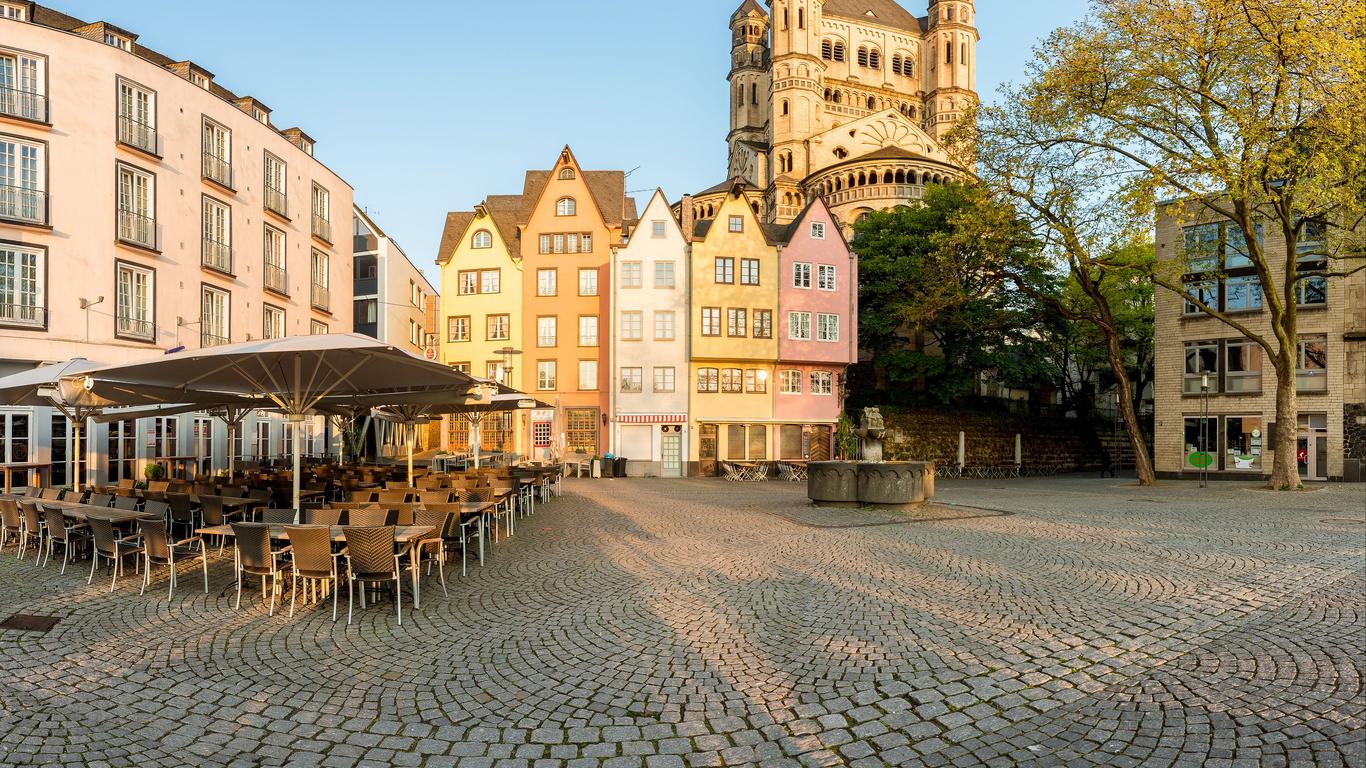Serving both the city of Cologne and the former capital of West Germany, Bonn, the Cologne-Bonn Airport lies halfway between the two in the district of Porz. It is one of Germany’s few 24-hour operating airports and is a major hub for both Eurowings and Germanwings, as well as being the third-largest cargo facility in the country.
Cologne-Bonn Airport’s two passenger terminals are located adjacent to one another, with Terminal 1 used predominantly by Eurowings and Germanwings, together with Lufthansa and Austrian Airlines. It was built in the 1970s in a U-shaped design and features numerous duty-free shops and restaurants scattered throughout, as well as travel agencies and currency exchange facilities. Terminal 2 is a more modern, rectangular building, designed from glass and steel, with operations beginning here as recently as 2000. It is used by numerous international airlines, including Air Berlin, KLM and Ryanair, with plenty of eateries and shops, together with the airport’s only business lounge and an interdenominational prayer room. The airport features an observation deck with outstanding views across the runways and military areas, as well as behind-the-scenes airport tours which take visitors out onto the apron for an up-close perspective on all the ground-handling operations. In addition to serving 115 passenger destinations across 35 different countries, the Cologne-Bonn Airport is a major hub for FedEx Express and United Parcel Service Airlines, as well as involved in training astronauts for space exploration through the German and European space agencies DLR and EAC.
The Cologne-Bonn Airport is served by its own train station which lies across both terminal buildings, connecting to the Cologne-Frankfurt high-speed line, as well as regional train services. There are also bus services which transfer passengers to Cologne, Bonn and other German and European destinations, or taxis are available outside both terminal buildings.
The first plane to depart from what was previously the Wahner Heide military training facility took to the skies in 1913, before an airfield was built on the site for the German Luftwaffe Air Force at the start of World War II. The British military expanded this facility at the end of the war and opened to civilian flights in 1951, with two additional runways and a new terminal building constructed.





